Driven by History
Supporting tractors for decades, even when manufacturers stop.
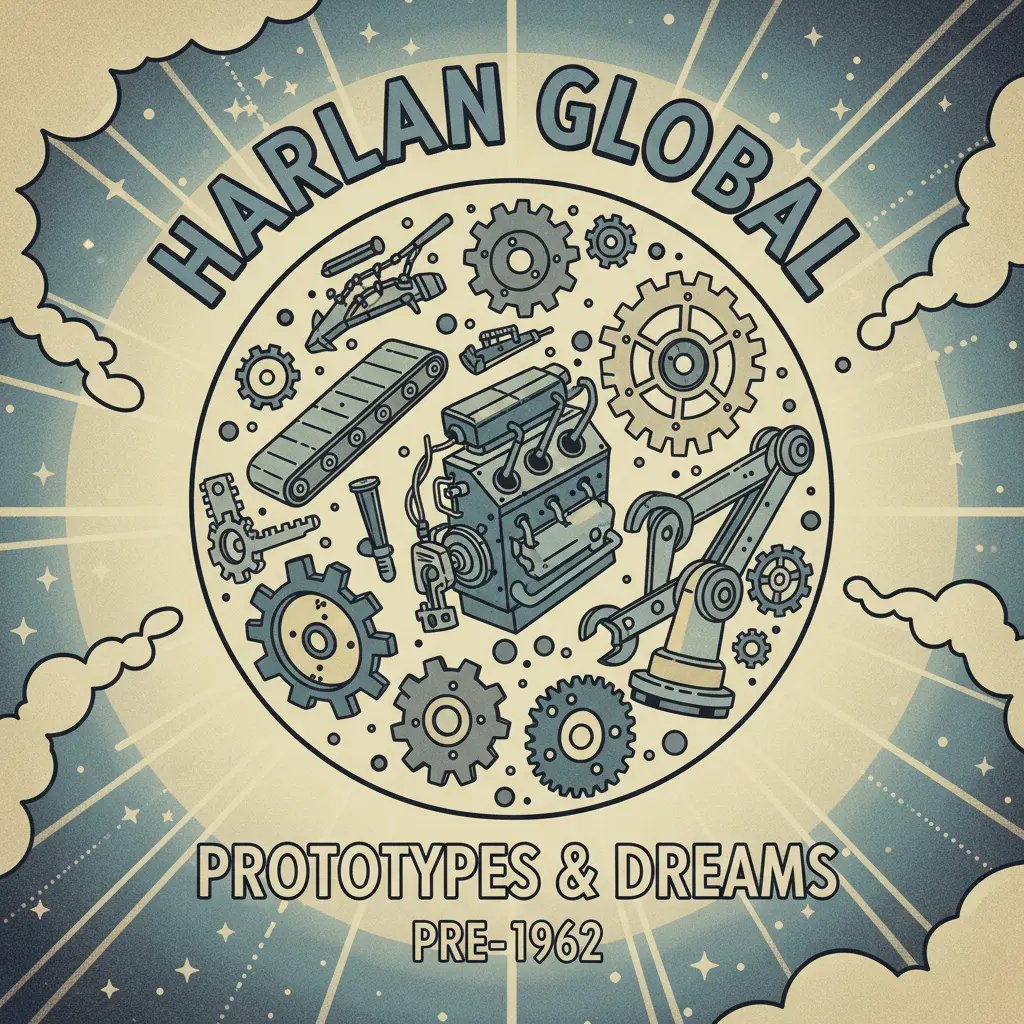
From Scrap Yard to Success
Jim Kaplan, Harlan’s founder, grew up in Sioux City, Iowa, where his father owned and operated a scrap yard. At the age of 11, Jim built his first motor vehicle from scrap parts. Excelling in everything he pursued as a child, he carried that drive into college. He attended the University of Texas and the University of Miami, earning a degree in International Business. While in college, he participated in the Air Force ROTC.
After graduating from the University of Miami, Jim was accepted into the Marine Corps pilot training program, completing the entire program ranked first in his class. He served as a Captain for three years, living in Japan, Florida, and California. Among his many responsibilities was purchasing spare parts.
After leaving the armed forces, Jim met his wife, Joyce, at the University of Texas and moved to Kansas City, where he acquired, owned, and operated an eggshell processing plant. Later, he rebuilt generator plants and sold them to Atlas Forklift. He eventually sold this business to Atlas and briefly consulted for them.
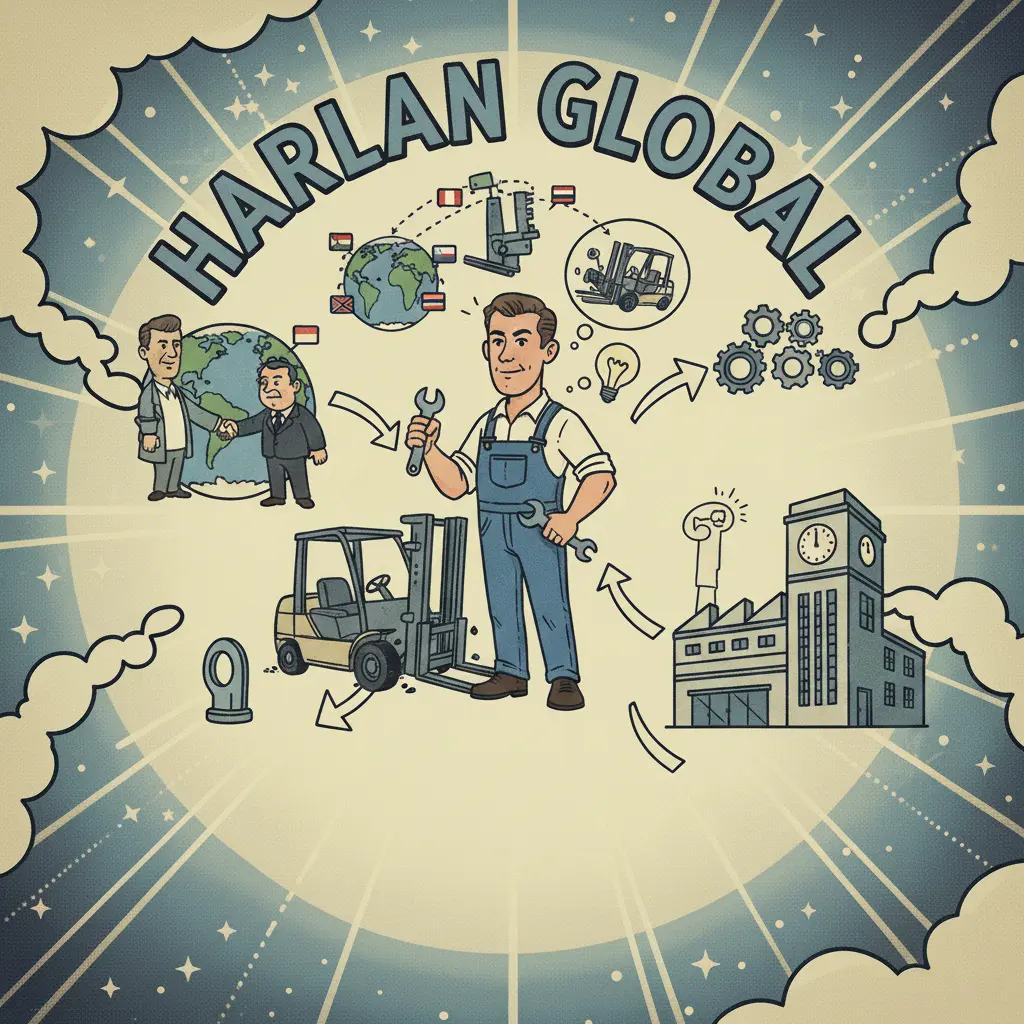
1962 - 1967: Harlan Takes Shape
In 1962, Jim Kaplan founded Harlan Corporation to rent and rebuild lift trucks. While repairing these lift trucks, Jim analyzed the causes of component failure and discovered that high-failure parts were unavailable. Taking matters into his own hands, he redesigned the parts, developed new sources, and purchased components to repair his customers’ trucks. He even approached the Lift Truck OEM with his improved designs. Though initially uninterested, the OEM later implemented these innovations. This drive to reengineer components, improving reliability and reducing costs, remains at the heart of Harlan’s operations today.
Soon, Jim was selling parts worldwide and forming lifelong friendships in over 70 countries with both customers and suppliers. Over the next 35 years, these key supplier relationships became one of Harlan’s greatest strengths, supporting rapid growth driven by improved forklift parts for a global market.
By 1967, Harlan had outgrown its early operations and established roots in a 280,000-square-foot facility, which continues to serve as our headquarters today.

1968: Pioneering Towing Tractors
In 1968, a customer in Venezuela asked Harlan to produce towing tractors. Rising to the challenge, Jim Kaplan purchased a Model E Clark and reengineered it using Harlan’s surplus parts. The result was the creation of Harlan’s first purpose-built tow tractors—the HT Classic and Cargo Master.
The first 25 units were designed and produced in just two months, with only the frame requiring new development before final assembly. These early models quickly earned a reputation for reliability and ease of maintenance, setting the standard for Harlan’s engineering philosophy for decades to come.
Harlan’s entrepreneurial spirit drove this rapid innovation. Projects that larger companies might deliberate over for months were accomplished overnight through Jim’s direct involvement. The company became a hub of energy, ingenuity, and growth—traits that continue to define Harlan Global today.
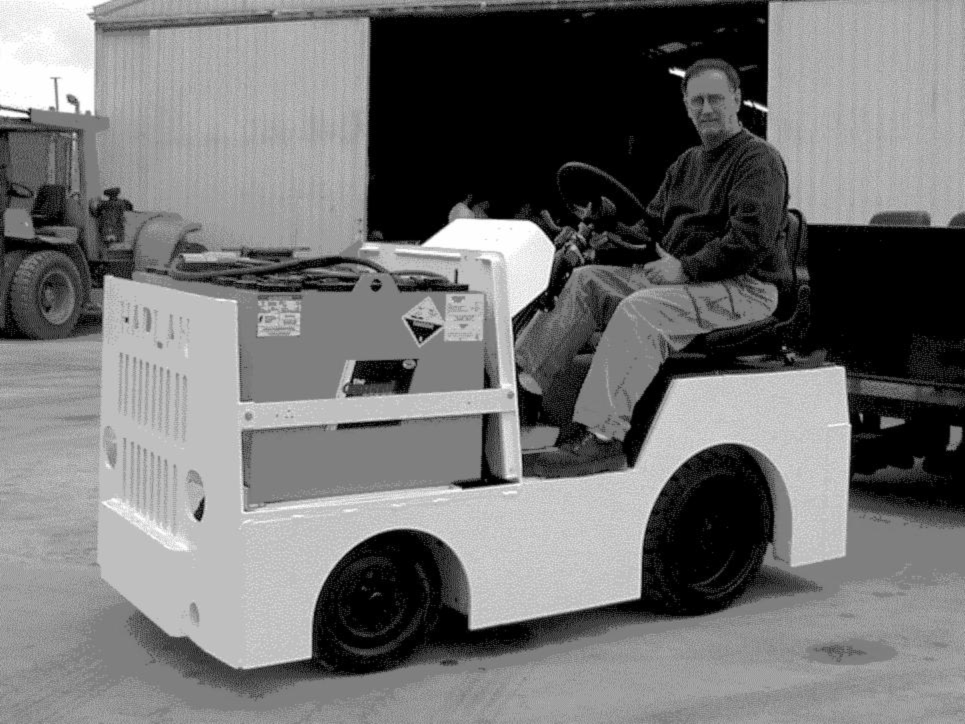
1970s-1980s: Innovation and Expansion
Harlan was an early adopter of computer technology, implementing a computer-based perpetual inventory control system by the early 1970s. By the early 1980s, the company recognized that it had outgrown its informal roots. To maintain growth, Harlan needed a more defined structure to enable effective delegation.
During this period, Harlan successfully bid on government contracts, beginning deliveries in 1984. These contracts contributed to a decade of production expansion, increasing output from 10 tractors per month to 90 tractors per month through both government and commercial business. Harlan’s future was bright, fueled by innovation, quality, and an entrepreneurial drive.
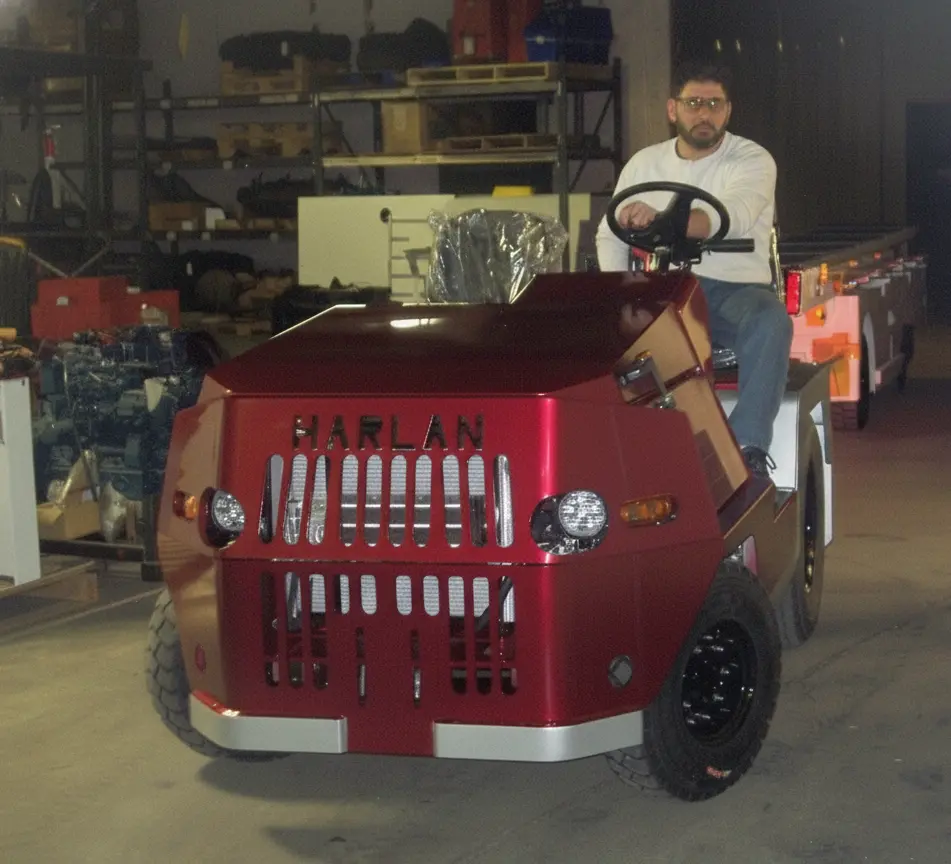
1989-1993: Transition Period
In 1989, Jamie Kaplan, founder of Harlan Automotive Parts, joined Harlan as President when Jim Sr. suffered a brief illness. Jamie began by modernizing the company’s systems, improving efficiency and laying the foundation for future growth.
In 1993, he launched the TransCon low profile tractor, backed by a global marketing effort that expanded worldwide sales. Designed around proven, reliable components—including the engine, transmission, drive axle, steering gear, and steer axle—it set a new benchmark for driver comfort and equipment reliability. Today, the TransCon remains one of Harlan’s highest-volume product.
During this period, Harlan also began developing a supplier base in China to improve cost competitiveness and sourcing capabilities. After years of collaboration, a partner company was established to operate independently, continuing to serve as a trusted supplier network. The quality achieved through these long-term relationships rivals the best in the world and helped strengthen Harlan’s global supply chain.
In 1991, Harlan adopted a strategy to become an OEM parts supplier for material handling and agricultural equipment, moving away from the will-fit parts business—much of which had focused on Clark brand forklifts. This shift proved highly successful, with longtime competitor Clark Equipment becoming one of Harlan’s largest customers. Harlan’s operations were organized into two business units: the OEM Parts Division and the Tractor Division.
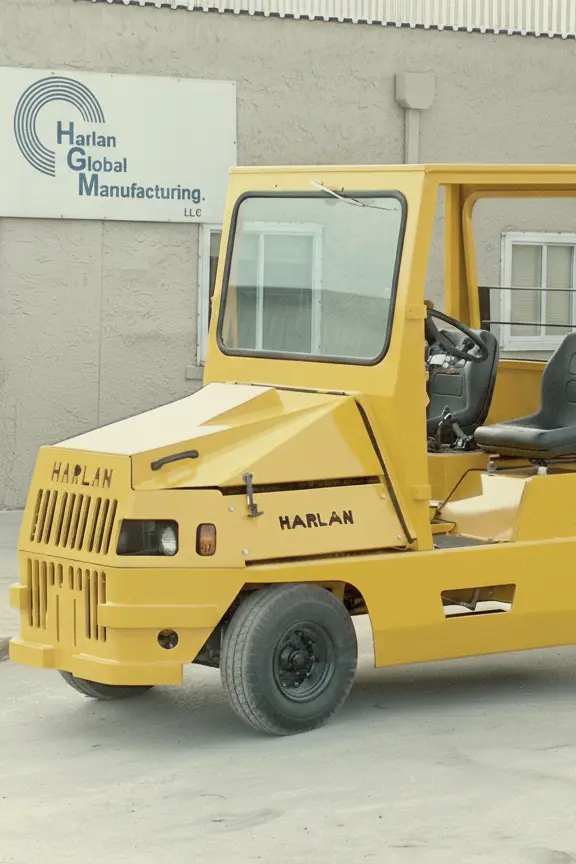
1995-1997: Breakout Period
By 1995, Harlan’s rapid growth overwhelmed its infrastructure. Deliveries were late, inventories were bloated, and product quality lagged behind the company’s high standards. Jim and Jamie Kaplan faced a pivotal decision: shrink the business for manageability or bring in outside expertise to establish the infrastructure needed for continued growth.
The executive team focused on two areas: Jim Kaplan, as Chairman, concentrated on OEM development, cost reduction, and new product initiatives; Jamie Kaplan, as President, led strategy, marketing, business process development, and day-to-day operations.
Over the next three years, Harlan implemented significant improvements:
- Quality: A new part and supplier development process reduced post-assembly defects by 98% and warranty costs by 96%.
- Engineering and Production: Tractor design was stabilized, synchronous flow production introduced, and accurate Bill of Materials and Routing achieved over 90%.
- Planning: Master Production Schedules, forecasting, and MRP systems were implemented to control material flow, eliminate parts shortages, and reduce inventory.
During this period, Harlan launched two new products: the Hybrid Diesel/Electric Tractor and the All-Purpose Vehicle. By using Pro-E virtual reality design software, Harlan minimized design errors, reduced lead times, and eliminated prototype rework, delivering quality products on time.
Additionally, the company developed a cost accounting system, rolled out in late 1997, providing the foundation for financial reporting, performance management, and product pricing. The system enabled the publication of audited results, improving access to capital for further growth.
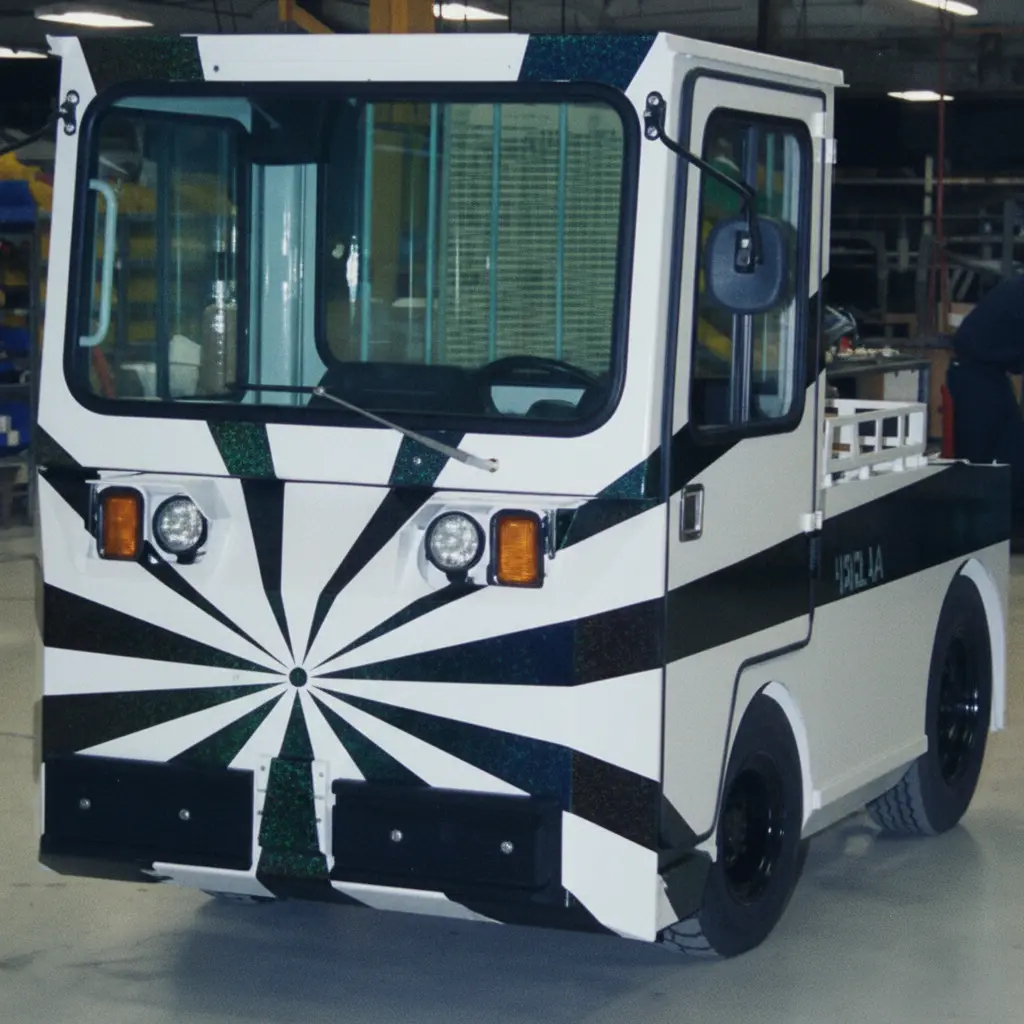
1998-2000s: Current Focus
Entering the 21st century, Harlan became ISO 9001 Certified, enabling more consistent and reliable products. The company’s design team introduced the environment-friendly HLE electric tractor with an AC-powered engine, minimal maintenance requirements, and extended battery life.
Continuing the environmental focus, Harlan also developed a tractor powered by the Ford ESG 6-4.2 engine, a low-emission automotive engine meeting EPA standards.
In 1999, Harlan implemented a company-wide network infrastructure, including global email, intranet, internet access, and outbound fax capabilities. This allowed seamless communications with employees, suppliers, and customers worldwide, enabling faster sharing of drawings, quotations, and sales information at lower cost.
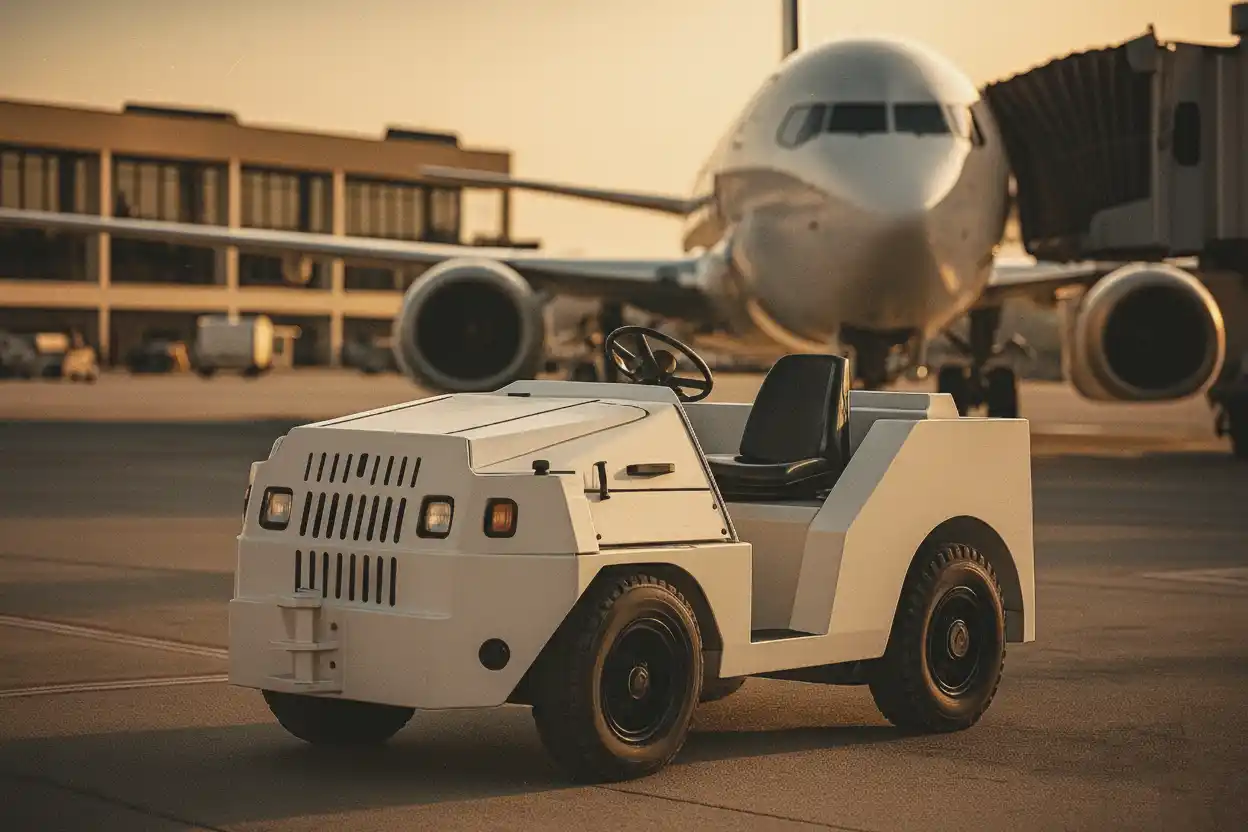
2000-2010: Innovation and Expansion
Between 1992 and 2010, innovation remained central to Harlan. Advanced machining and design centers allowed the company to produce OEM parts compatible with nearly every GSE make, alongside a growing fleet of internal combustion, hybrid, and electric tow tractors engineered for performance and reliability.
Harlan embraced lithium battery technology, pioneering more efficient, sustainable power solutions for next-generation ground support equipment, reinforcing the company’s reputation for forward-thinking design.
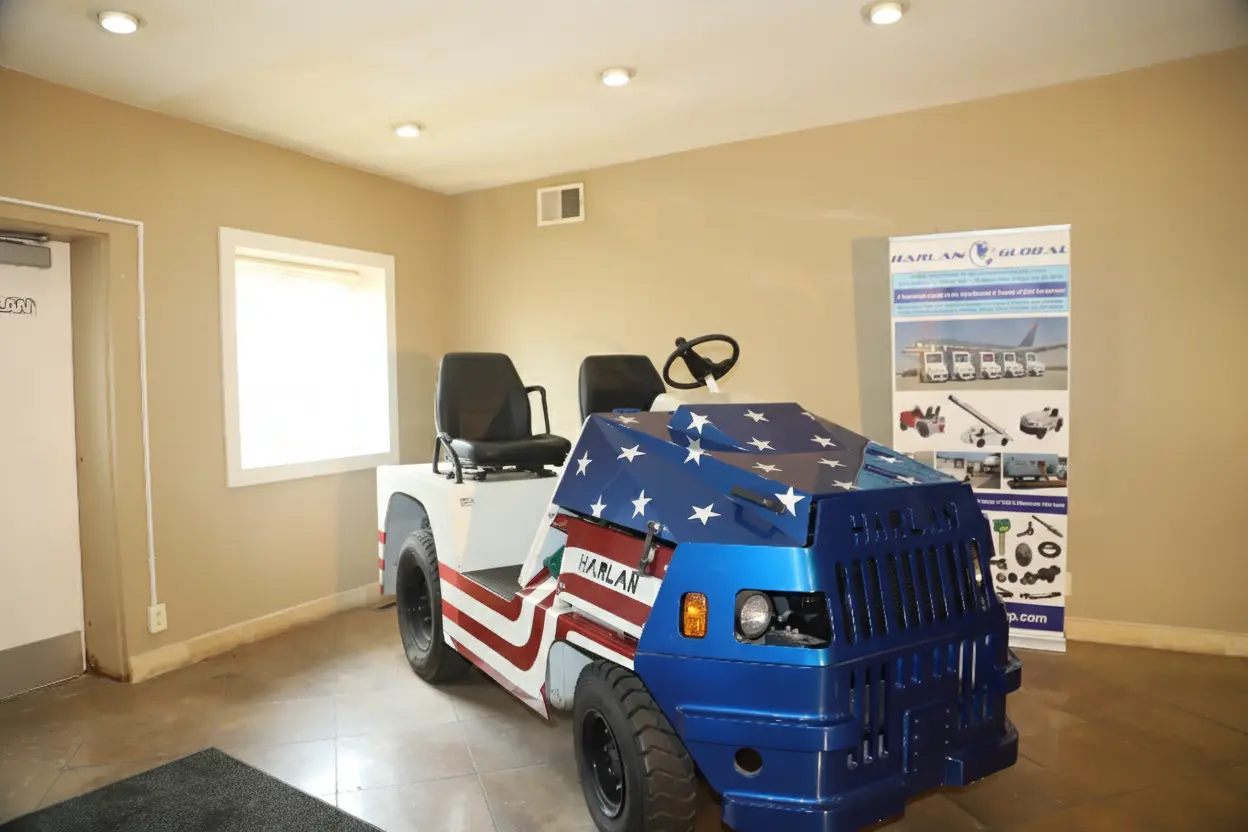
2020-Present: Harlan Today
Despite global economic challenges, Harlan continued to innovate, introducing the Service Utility Vehicle (SUV) with an optional scissor lift for ground operations. The company also designed an autonomous cargo platform and launched the electric hitch, a safety-focused engineering breakthrough.
Committed to sustainability, Harlan developed a retrofit conversion kit, enabling existing fleets to transition to electric mobility and extend the life of GSE assets. Today, Harlan exports to more than 106 countries, continuing its mission to deliver reliable, innovative solutions worldwide.
